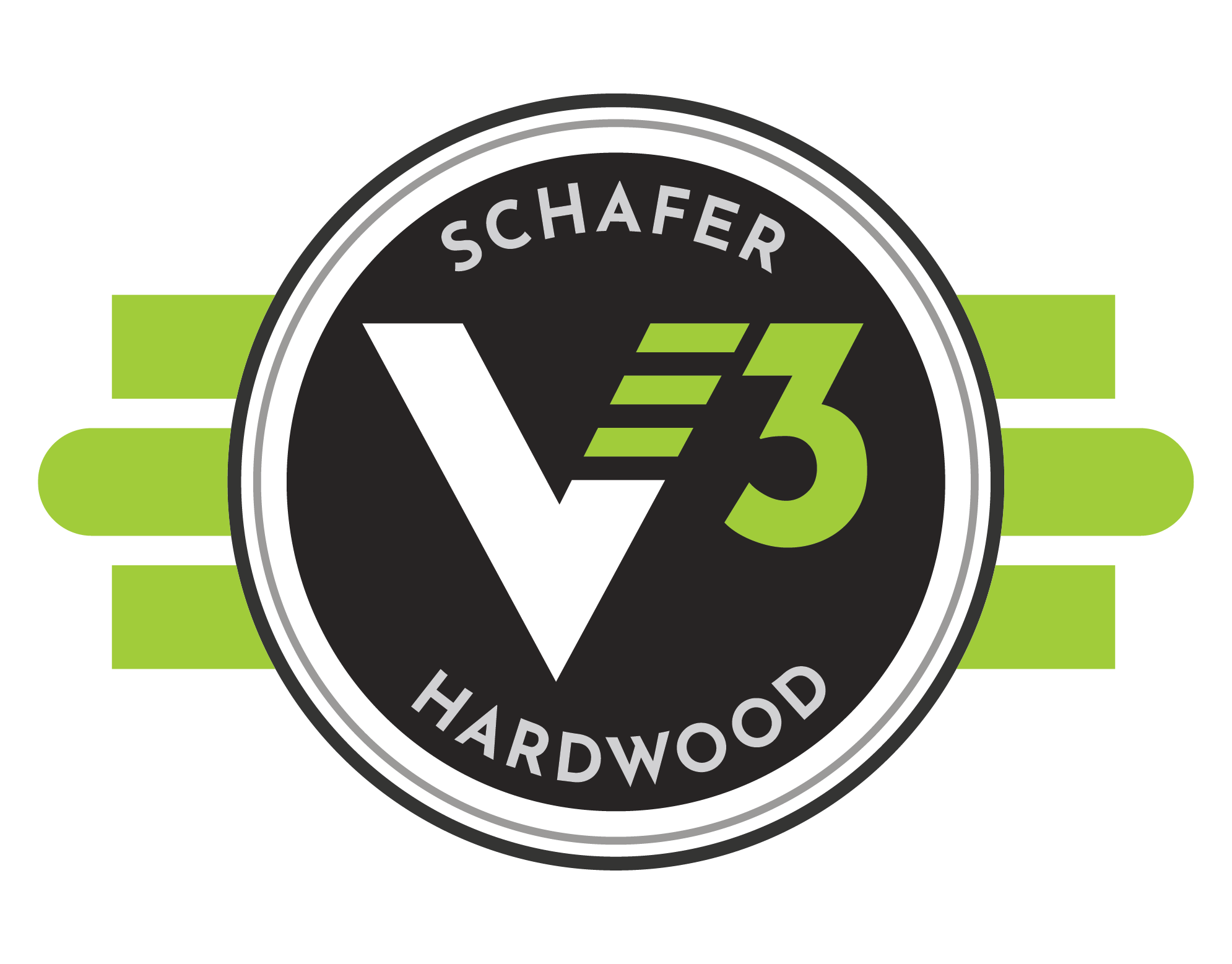1How is V3 engineering flooring more stable than solid hardwood flooring?
Solid hardwood flooring naturally moves with changes in Relative Humidity (RH). In dry climates with low RH%, the wood shrinks, causing gapping in the floor. In wet conditions, the wood swells, potentially causing cupping in the floor boards. Our specialized ¾” 3-ply wide plank system incorporates 3 layers of North American hardwood, specially cured and cross-plied to ensure stability, minimal floor movement, and the elimination of gapping and cupping.
2How does relative humidity affect hardwood flooring?
Relative Humidity (RH) is most simply described as the amount of moisture that’s in the air compared to how much moisture the air can hold at a certain temperature. For example, 50% RH means the air contains half the moisture it can hold at that temperature. Wood gains or loses moisture and expands or shrinks based on the RH in the surrounding air.
At low RH% (for example, Colorado in January), the air is very dry and therefore a hardwood floor is prone to shrinking and gapping. At a high RH% (for example, Florida in August), the air is very saturated and the hardwood floor is swelling to its maximum capacity. V3 flooring is an ideal solution in climates that see a wide swing in RH% throughout the year. V3 flooring’s StablCor™ construction provides maximum stability in these conditions, resulting in significantly reduced movement (meaning expansion and contraction) within the floor.
The ideal RH% range for solid hardwood flooring is between 35%-50%, compared to the wider range of 29%-60% which is ideal for V3. A hygrometer in the same interior area as the hardwood flooring will help you manage the relative humidity levels.
3 Why can V3B be installed below grade?
Below-grade conditions are notorious for flooring complications due to moisture and relative humidity. Because of V3B Flooring's StableCor™ middle layer, V3B Flooring is the ideal hardwood flooring option to install below-grade. Our specialized 3-ply system incorporates 3 layers of North American hardwood, cross-plied to ensure stability, minimal floor movement, and the elimination of cupping.
4What are the installation requirements for V3 flooring? Can I order the installation materials when I order my flooring?
V3 flooring is recommended to be nailed or glued down according NWFA guidelines.
5Is V3 flooring prefinished?
V3 flooring is available in both unfinished and pre-finished options. Unfinished flooring is ready to be finished on site after installation. V3’s Langewood Collection offers a variety of custom pre-finished options. We also offer custom details including beveled edges, hand-scraping, and wire-brush texturizing.
6What widths and lengths are available for V3 flooring?
V3 flooring is available in widths up to 16” wide and lengths up to 20’ long! Each standard bundle of V3 flooring contains an assortment of lengths from 18” to 10’, with a minimum average of 4’-5’ (depending on grade). Custom long lengths are available, as well as Herringbone and Chevron patterns.
7What is the acclimation period for V3 flooring?
V3 flooring does not need to acclimate for a period of time, due to the nature of the StablCor™ middle layer, provided the Relative Humidity is between 25%-50%.
8Is V3 flooring made with any imported materials?
No! V3 flooring is constructed with 3 layers of North American hardwood; the 2 glue seams are produced in the USA with American-made adhesives. These adhesives are 100% VOC free (formaldehyde and solvent free).
9How do I care for and maintain my V3 flooring?

